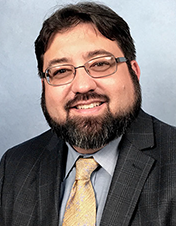
encounter

H. Stephen Bralley, M.Ed.
Director of Secondary Education, North American Division
reek theories from Aristotle’s “Socio-political ontology”, Plato’s “The Cave” and other works, Hippocratic Theory, Darwinism, Humanism, Marxism, Capitalism, Critical Race Theory, and many more seek to adequately frame the study of history, seeking to address major issues in the history of humankind. Each seeking to explain the ultimate origin of wrong or in contrast depict the ideal society or solution. But as Christians and specifically Adventist Christians, we acknowledge useful elements from all these theories, yet attribute specifically the origin of evil to something deeper.
In my view, as Adventist educators we should teach history critically through the lens of the Great Controversy. Indeed, all these merely human theories address pieces of this penultimate, over-arching theme influencing the whole of reality, each contributing good reasons for why we believe in the Bible and its depiction of origins. So, within this rich, spiritual context, we do include racism as an important part of history, providing the motivation for many oppressive actions that we can observe both in the past and within current treatments such as Critical Race Theory. We do find instances where the unequal distribution of wealth and greed cause divisive class issues, as Karl Marx noted. We do see the unhelpful limiting of personal freedoms and restrictions on personal property as issues that Adam Smith’s ‘unseen hand’ sought to address. We can acknowledge, just as the Greeks believed, that the environment influences cultural choices. Yet none of these theories offers a complete account of the ultimate origin of wrong or every necessary aspect of the perfect society. In contrast, an account of how the fall of Lucifer in heaven and the subsequent fall of man in the Garden of Eden created the sinful condition of man's nature sketches a compelling, comprehensive narrative fully adequate to the task of explaining evil’s many manifestations throughout human history. That is the illuminating lens through which we view history; that rich conceptual framework represents what we should be teaching impressionable minds. Within the Adventist worldview, we can include and adequately address the many theories and frameworks the world uses to explain history and modern society. Ellen G. White wrote strongly on how Adventists should not shy away from critical examinations, “To hold yourselves aloof from an investigation of truth is not the way to carry out the Savior’s injunction to “search the Scriptures.” Is it digging for hidden treasures to call the results of some one's labor a mass of rubbish, and make no critical examination to see whether or not there are precious jewels of truth in the collection of thought which you condemn? Will those who have almost everything to learn keep themselves away from every meeting where there is an opportunity to investigate the messages that come to the people, simply because they imagine the views held by the teachers of the truth may be out of harmony with what they have conceived as truth?”
REFERENCES
Lawrence-Wilkes L., Ashmore L. (2014) A Critical Framework. In: The Reflective Practitioner in Professional Education. Palgrave Pivot, London.
White, Ellen G. (2010) Testimonies on Sabbath-school Work. Ellen G. White Estate
G
A History Teacher’s Thoughts on Critical Frameworks
“Critical reflection is an extension of “critical thinking”. It asks us to think about our practice and ideas and then it challenges us to step-back and examine our thinking by asking probing questions. It asks us to not only delve into the past and look at the present but importantly it asks us to speculate about the future and act.” (Lawrence-Wilkes L., Ashmore L. 2014)
winter 2021